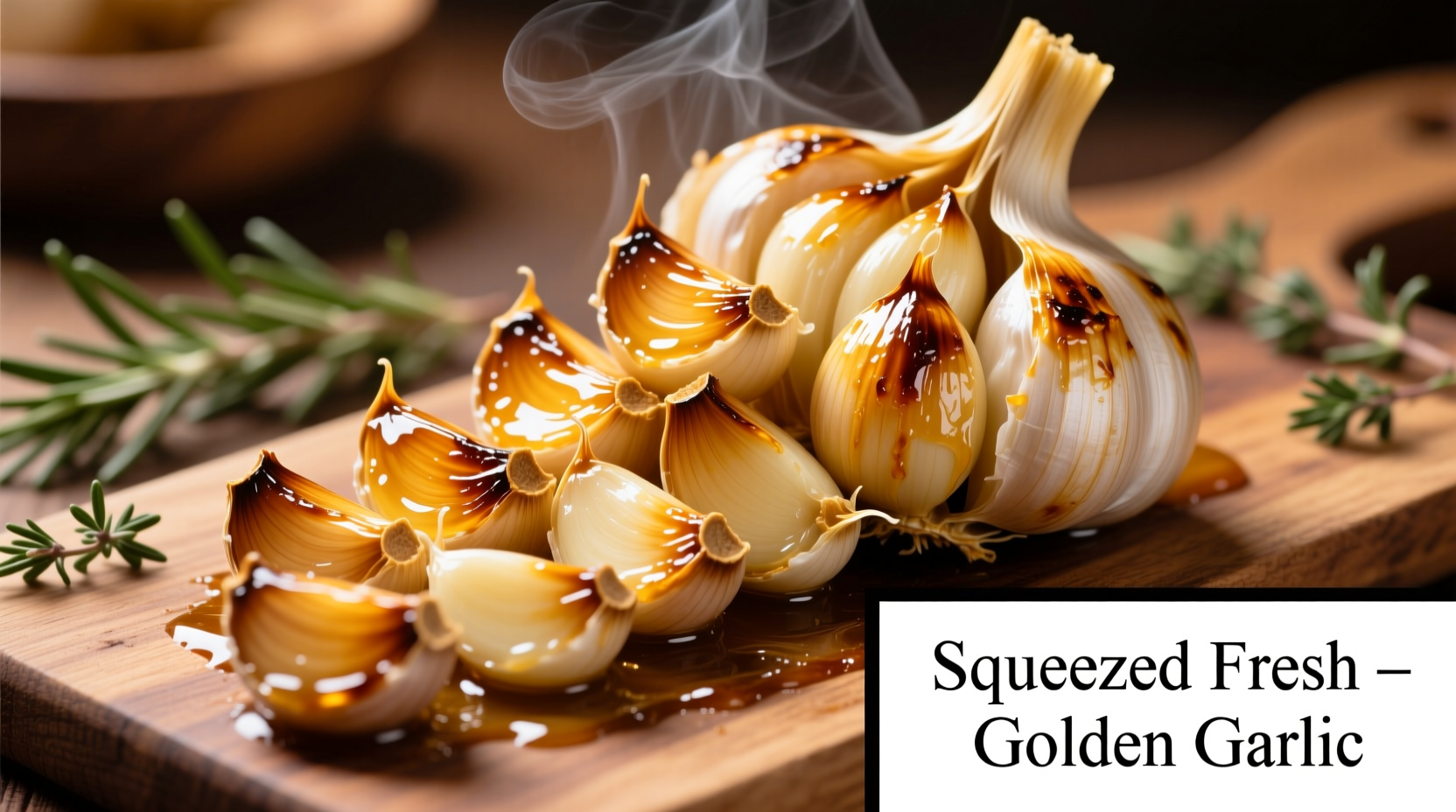Baking garlic transforms harsh raw cloves into sweet, mellow, spreadable perfection with minimal effort. The ideal method involves roasting whole heads at 400°F (204°C) for 35-40 minutes after drizzling with olive oil and wrapping in foil, creating versatile culinary gold for sauces, spreads, and dishes.
Unlock restaurant-quality garlic flavor at home with this science-backed technique that eliminates bitterness while maximizing sweetness and aroma. Professional chefs rely on baked garlic as their secret weapon for building complex flavor foundations without overwhelming heat.
The Science Behind Baking Garlic's Flavor Transformation
Raw garlic contains allicin, the compound responsible for its sharp bite and pungent aroma. When exposed to heat during baking, allicin breaks down into milder sulfur compounds that create sweet, nutty, caramelized notes. According to research published in the Journal of Agricultural and Food Chemistry, baking garlic at 400°F for 35 minutes reduces allicin content by 95% while developing over 30 new flavor compounds through Maillard reactions.
| Property | Raw Garlic | Baked Garlic (400°F/35min) |
|---|---|---|
| Allicin Content | High (6,500 μg/g) | Nearly undetectable |
| pH Level | 5.3 (acidic) | 6.1 (milder) |
| Flavor Profile | Sharp, pungent, burning | Sweet, nutty, caramelized |
| Digestibility | May cause heartburn | Gentler on stomach |
Your Step-by-Step Guide to Perfect Baked Garlic
Follow this professional technique for consistently excellent results every time:
Preparation Essentials
Choose firm, plump garlic heads with tight cloves. Avoid any with green sprouts or soft spots. You'll need:
- Fresh garlic heads (1 per serving)
- Extra virgin olive oil (2 tsp per head)
- Fine sea salt (1/4 tsp per head)
- Aluminum foil
The Baking Process Timeline
Understanding the chemical changes during baking helps you achieve perfect results:
| Time | Temperature | Chemical Transformation | Visual Cues |
|---|---|---|---|
| 0-10 min | Heating phase | Moisture evaporation begins | No visible changes |
| 10-20 min | 300-350°F | Allicin breakdown accelerates | Cloves soften slightly |
| 20-30 min | 350-400°F | Maillard reactions create new flavors | Golden edges appear |
| 30-40 min | 400°F | Complete allicin conversion | Cloves golden brown, soft |
Execution: From Raw to Remarkable
- Preheat oven to 400°F (204°C)
- Cut 1/4 inch off the top of each garlic head to expose cloves
- Place heads on foil squares, drizzle with olive oil, and sprinkle with salt
- Fold foil into sealed packets
- Bake for 35-40 minutes until cloves are golden and tender
- Cool 5 minutes before squeezing out softened cloves

When Baking Garlic Works Best (and When It Doesn't)
Baking garlic shines in specific culinary applications but isn't universally appropriate. Understanding these context boundaries prevents flavor missteps:
- Ideal for: Creamy sauces, mashed potatoes, salad dressings, bread spreads, and dishes requiring subtle garlic notes
- Avoid for: Quick stir-fries, raw applications like aioli, or dishes where sharp garlic bite is essential
- Temperature warning: Baking below 350°F won't fully transform flavors; above 425°F risks burning before complete transformation
- Time sensitivity: Underbaked garlic (under 30 minutes) retains unpleasant bitterness; overbaked (over 45 minutes) becomes bitter again
Culinary Applications: Beyond the Obvious
Professional chefs use baked garlic in these sophisticated ways that home cooks often overlook:
Flavor Foundation Building
Blend baked garlic with roasted shallots and anchovies to create an umami-rich base for sauces that adds depth without overwhelming garlic flavor. This technique, documented in Modernist Cuisine, builds complex flavor layers that raw garlic cannot achieve.
Preservation Techniques
Store baked garlic properly to maintain quality:
- Refrigerate in airtight container with olive oil for up to 2 weeks
- Freeze individual portions in ice cube trays for 3 months
- Dehydrate at 140°F for 8 hours to create garlic powder with sweeter profile
Common Mistakes That Ruin Baked Garlic
Avoid these frequent errors that compromise results:
- Skipping the foil wrap: Causes moisture loss and uneven cooking
- Using old garlic: Sprouted garlic develops bitter compounds even when baked
- Insufficient oil: Prevents proper steam environment for transformation
- Not preheating oven: Extended heating phase creates uneven results
Why Baking Beats Other Garlic Preparation Methods
Compared to alternatives, baking offers unique advantages:
- vs. Roasting: Baking in foil creates steam environment for more even transformation
- vs. Sautéing: Eliminates risk of burning while developing deeper flavors
- vs. Raw: Makes garlic digestible for sensitive individuals while enhancing sweetness
- vs. Pickling: Preserves more natural garlic essence without vinegar interference
Advanced Techniques for Flavor Maximization
Elevate your baked garlic with these professional tricks:
- Add a sprig of rosemary or thyme inside the foil packet for subtle herbal notes
- Substitute half the olive oil with melted butter for richer flavor
- Finish with lemon zest after baking to brighten the sweet notes
- Combine with roasted tomatoes for a compound butter base











 浙公网安备
33010002000092号
浙公网安备
33010002000092号 浙B2-20120091-4
浙B2-20120091-4